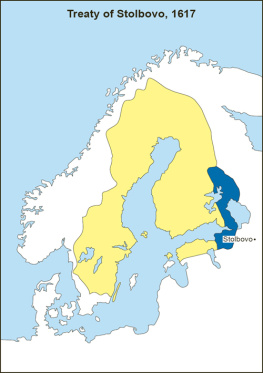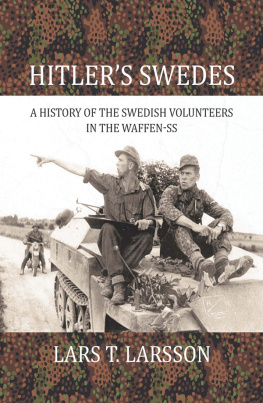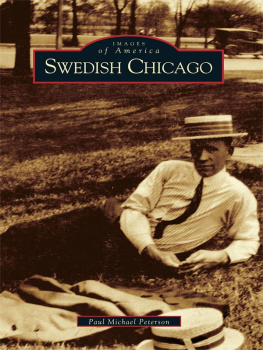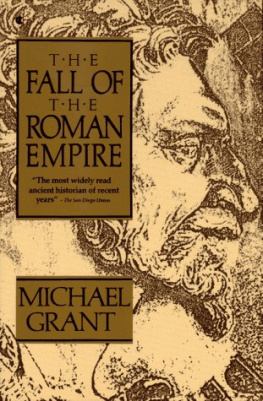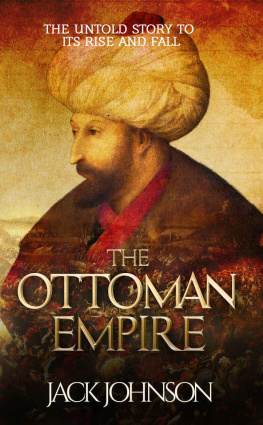Eken Press Limited
87 Fore Street, Hertford,
Hertfordshire, SG14 1AL UK
The Rise and Fall of the Swedish Empire
Eken Press and Patrik Nilsson 2021
First edition
ISBN 978-1-908233-36-3
eISBN 978-1-908233-36-3
Mobi ISBN 978-1-908233-36-3
Author: Patrik Nilsson
Translation: Joseph Davies
Maps: Samuel Svrd
Editor (Swedish Edition): Benny Eronson
Cover: Stig Ahlstrand
Layout, insides: Alan Maranik
No part of this book may be reproduced without the written permission of the authors.
About Dating:
During the period covered by this book, Sweden, Britain and Russia was using the Julian calendar (Old style), eleven days behind the Reformed calendar of Pope Gregory XIII (New style). Denmark-Norway, the Netherlands and some protestant parts of Germany used the Julian calendar to 1700. The dates given in this book follow the Swedish calendar.
INTRODUCTION
In the late Middle Ages, after being dominated politically by the more powerful Danish Crown and economically by the Hanseatic League, it was as if Sweden suddenly emerged from the darkness. Sweden asserted its independence in the 1500s and later developed into a veritable superpower that was rightfully feared by its neighbors. Countless factors contributed to this sudden development. But, as one must begin somewhere, let us start with the Northern Seven Years War (1563-1570), which has also been called the First Northern War.
The formal causes of this war could be considered mere trifles such matters as who had the right to use the heraldic symbol of three crowns. But the conflict ran deeper than this: Denmark wanted to reinstate the Kalmar Union, Sweden wanted to increase its independence and influence, and not least of all, both kings wanted a place at the table as the Teutonic Orders crumbling holds in the Baltic were divvied up. The war was devastating, with great losses on both sides and the kind of warfare that would characterize the era of the Swedish Empire, aimed at ordinary civilians as much as enemy soldiers.
In 1565, the Swedes stormed the city of Varberg in an extremely brutal attack. They suffered many casualties as they came pouring over the citys earthworks, but at last they succeeded in overpowering the Danish defenders. The aftermath was a complete bloodbath. For some of Varbergs citizens, death was neither quick nor painless; they were robbed, raped and beaten before finally being slaughtered. The citys priest was decapitated outside the door of the church. It was not long before fire had broken out in the city. Out of this inferno strode a mercenary who had fought for the Danish army. He approached a group of Swedish officers.
In French, he introduced himself as Pontus, son of Jacques dEscouperie, Seigneur de Russol de la Gardie, and he pledged his service to the Swedish military. His noble background was most likely a complete fabrication, but there was nothing wrong with his military prowess. Quite the opposite! In 1580, he took Korela Fortress from the Russians. That winter, he marched across the frozen Gulf of Finland and took the enemy by surprise. Fifteen years after switching allegiances, this same man stood on Estonian soil dressed in the regalia of a Swedish general as the city of Narva burned before him. No one escaped; thousands of soldiers and citizens were slaughtered. Men fell, women fell, children fell, none were spared, as is customary, he wrote to the king.
In December of 1570, after Swedish King Eric XIV had been deposed by his brothers, peace was made between Sweden and Denmark. Both countries were exhausted. But Sweden continued quarreling with Russia and Poland over influence in the Baltic, with varying degrees of success. And despite the new treaty with Denmark, the conflict with them was only beginning.

Jacob De la Gardie (1583 1652). His father Pontus De la Gardie was among those who built the Swedish military state from the ground up. He taught the army siege tactics, how to successfully fight in modern formations and how to carry out campaigns deep in enemy territory without losing strength.
His son Jacob took over his fathers work and eventually marched on the streets of Moscow with his army. Here is his portrait, painted by an unknown Dutch master.
It was at this time that the Swedes began to earn a reputation as fearsome soldiers. This meteoric rise was to be followed by an equally meteoric fall. Jacob De la Gardies own grandson was the field marshal who desperately defended Swedens borders as the nation teetered on the brink of total destruction. His name was Magnus Stenbock.
Two new kings, the aging Charles IX of Sweden and the young Christian IV of Denmark, found themselves on a collision course at the beginning of the 1600s. Both countries wanted to get ahold of the island of Saaremaa in the Baltic Sea. Charles IX had begun to call himself King of the Lapps, meaning he wanted to gain influence in the North and levy taxes from the Sami people.

Charles IX was a hard man. He drove his nephew from the throne and instituted strict religious laws. He also had one of the strangest combovers known to history three tufts of hair twisted together on the top of his scalp. Unknown/National Museum of Fine Arts.
While Charles IX was occupied by war with Poland and Russia, Christian IV struck. The Swedes managed to avoid a total defeat despite fighting a war on three fronts, but they lost two of the kingdoms most important fortresses: Swedens breathing hole in the West, lvsborg Fortress, and the lock in the south: Kalmar. Few major battles were fought in this conflict, but the soldiers of both countries wreaked as much havoc as they could in their respective enemys territory.
ETERNAL PEACE IN KNRED
As 1613 drew to a close, peace talks began at Sjared on the border between the Danish province of Halland and the Swedish province of Smland. The negotiations went very slowly at first, but at last a breakthrough was achieved. The Danes had worked out a clever trick; they would consider returning lvsborg fortress for the astronomical sum of one million Swedish riksdalers in silver. The Swedes agreed to these terms. On that day, January 21, 1613, peace was restored between the two archenemies. This event has gone down in history as the Treaty of Knred.
The following day, the Danish chief negotiator Eske Brock wrote in his diary that an eternal peace had been established between Denmark and Sweden and that all war and discord has been abolished for time eternal. Few people have been more wrong than Eske Brock.
The Swedes scraped together the ransom money over the course of the agreed-upon six years. This transformed Sweden into a nation of high taxes. Everyone, without exception, had to contribute. A farm maiden had to shell out half a riksdaler, a farmhand a whole riksdaler, and so on in a rising scale. The king himself is said to have melted down his silver tableware. The government administration devoted itself tirelessly to the work of levying taxes.
The Danes delight at this enormous influx of funds would soon be dampened. The ransom of lvsborg served as a catalyst for the creation of a well-oiled Swedish governmental apparatus that would soon begin conscripting vast numbers of farmers as soldiers, year after year. These soldiers would, by their conquests, establish an empire around the Baltic Sea, often to the disadvantage of the Danes.

